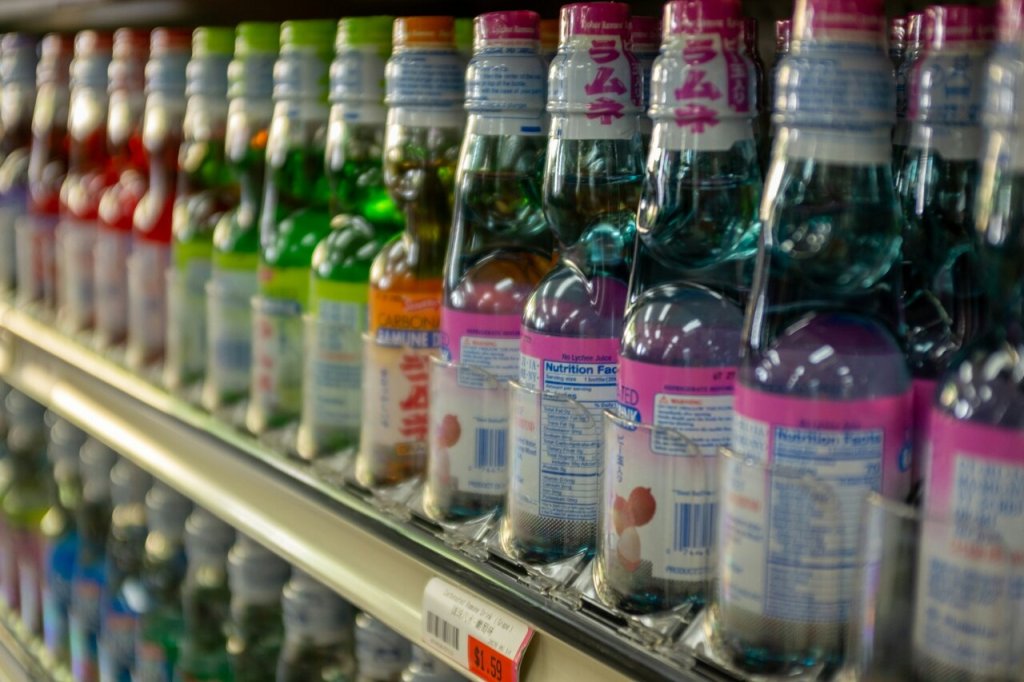Key Beverage Innovation Trends in 2024
NielsenIQ data shows that when innovation sales grow, a company is 1.8X more likely to grow overall sales compared with companies whose innovation sales are stagnant or declining. But, not all brands are putting in the effort to innovate in an intelligent, sustainable way.
With that in mind, here are 5 key trends impacting the beverage aisle:
1. Health and Wellness Focus
Consumer demand for products that support their health and wellness is on the rise, and many beverage brands are filling that need. According to NIQ’s 2023 Consumer Outlook, 46% of consumers identified physical or mental wellness as one of their top priorities.1 And, with 47% of Americans having at least one of three risk factors that contribute to heart disease, it’s no surprise that consumers are increasingly seeking beverages that do more than just quench thirst.2 They want drinks that offer functional benefits, such as boosting immunity, enhancing mental clarity, or aiding digestion. This shift has led to a surge in demand for beverages fortified with vitamins, minerals, antioxidants, and probiotics. Brands are responding by developing products that cater to these health-conscious consumers, such as kombuchas, infused waters, and protein-packed smoothies. The rise of plant-based beverages is also noteworthy, as consumers look for dairy alternatives that align with their dietary preferences and ethical considerations.
Additionally, the trend towards health and wellness is driving innovation in the ingredients and production processes used in the beverage industry. Natural sweeteners, clean labels, and transparency about ingredient sourcing are becoming increasingly important to consumers who are wary of artificial additives and high sugar content. This has led to the development of beverages that are not only healthier but also more sustainable, as brands strive to meet the demand for products that are good for both the body and the planet. As this trend continues to grow, we can expect to see even more creative and health-focused beverage options on the shelves, offering consumers a wide array of choices that support their wellness goals.
2. Sustainability and Eco-friendly Packaging
Sustainability and eco-friendly packaging are at the forefront of innovation in the beverage aisle, driven by consumer demand for products that minimize environmental impact. In fact, 69% of consumers state that sustainability is more important to them than it was two years ago.3 Brands are increasingly adopting sustainable practices, from sourcing ingredients responsibly to implementing eco-friendly manufacturing processes. This shift is evident in the rise of beverages packaged in recyclable, biodegradable, or compostable materials. For instance, plant-based plastics, aluminum cans, and glass bottles are becoming more common as companies seek to reduce their carbon footprint and appeal to environmentally conscious consumers. By prioritizing sustainability, beverage brands are not only addressing a critical global issue but also enhancing their brand image and building trust with consumers who prioritize environmental stewardship.
Moreover, the move towards sustainable packaging is fostering creativity and innovation within the industry. Companies are exploring new materials and packaging designs that not only reduce waste but also improve the overall consumer experience. For example, some brands are experimenting with reusable packaging systems, where consumers can return empty containers for refills, thereby reducing single-use packaging waste. Additionally, advancements in packaging technology are enabling the creation of lighter, more durable, and more efficient packaging solutions that minimize resource use and transportation emissions. As consumers become more informed and passionate about sustainability, the beverage industry’s commitment to eco-friendly packaging is set to become a defining factor in the market, influencing purchasing decisions and driving industry-wide change.

5 Key Habits of Successful FMCG Brands
The markets are still challenged with inflation, shifting demand, and more.
But some CPG brands are rising above the rest to gain market share and build the foundation for a stronger future. To help you better understand how they’re achieving their goals, we’ve compiled some of the key habits we’ve seen across the spectrum in an easy-to-read eBook for you.

3. Convenience and On-the-Go Options
Convenience and on-the-go options are transforming the beverage aisle, catering to the fast-paced lifestyles of modern consumers. With busy schedules and a constant demand for quick, easy access to refreshments, consumers are gravitating towards single-serve, portable beverage solutions. Innovations such as ready-to-drink (RTD) coffees, teas, and functional drinks are becoming increasingly popular, providing instant gratification without the need for preparation. In fact, the RTD and packaged coffee market is now worth more than $23 billion.4 Brands are responding by creating convenient packaging formats like resealable bottles, pouches, and cans that fit seamlessly into consumers’ daily routines, whether they’re commuting, working out, or running errands. This trend not only meets the immediate needs of consumers but also encourages spontaneous purchases, boosting sales and brand visibility.
Additionally, the rise of subscription services and direct-to-consumer models is enhancing convenience for beverage shoppers. Subscription boxes delivering a curated selection of beverages directly to consumers’ doorsteps are gaining traction, offering a hassle-free way to discover new products and maintain a steady supply of favorite drinks. These services often include personalized recommendations based on individual preferences, adding a layer of customization that appeals to today’s discerning consumers. By leveraging digital platforms and streamlined delivery systems, beverage brands are making it easier than ever for consumers to access their products, ultimately driving customer loyalty and expanding their market reach.
4. Unique Flavors and Ingredients
The beverage industry is witnessing an exciting evolution in flavors and ingredients as brands strive to captivate consumers with unique and innovative offerings. Traditional flavors like cola and lemon-lime are making way for more adventurous and exotic combinations such as dragon fruit, yuzu, and hibiscus. These novel flavors not only provide a refreshing break from the ordinary but also cater to the increasingly diverse palates of today’s consumers. Many of these flavors also benefit from summer beverage trends. By experimenting with unconventional flavor profiles, brands are able to create distinctive products that stand out on crowded shelves, attracting curious and adventurous consumers eager to try something new.
In addition to unique flavors, the incorporation of unusual and healthful ingredients is transforming the beverage landscape. For example, Kombucha saw $775 million in sales in the past year, up 7.4% over last year.4 Additionally, ingredients like turmeric, matcha, and activated charcoal are becoming more common in drink formulations, promising various health benefits alongside their distinct tastes. This trend is driven by consumers’ growing interest in holistic health and natural wellness solutions. By blending these ingredients into their beverages, brands can offer products that not only delight the taste buds but also support the consumers’ wellness goals. This fusion of flavor innovation and functional ingredients is setting the stage for a new era in the beverage industry, where taste and health go hand-in-hand.
5. Functional and Mood-enhancing Beverages
Functional and mood-enhancing beverages are gaining significant traction as consumers seek products that not only quench thirst but also provide specific health benefits and support overall well-being. This is an area where innovation is truly shaping the landscape. In fact, innovation drove 258 new item launches in the last year, many with unique functional claims and ingredients.5 As consumers become more knowledgeable about the potential health benefits of these ingredients, they are increasingly turning to beverages that offer functional advantages. This shift is driving brands to develop and market products that cater to these health-conscious preferences, positioning functional beverages as an integral part of the modern wellness routine.
Key functional claims in Beverage include Metabolism Support and Obesity Support, the 3rd & 9th highest-grossing functional claims for beverages.5 Brands are responding by creating beverages that blend traditional ingredients with modern scientific advancements, offering a holistic approach to well-being. This is particularly true in the energy drink market. This trend not only aligns with the broader movement towards health and wellness but also provides an opportunity for brands to differentiate themselves in a crowded market by offering unique, benefit-driven products that resonate with the evolving needs of their consumers.
Challenges and Opportunities in Beverage Innovation
Innovating in the beverage industry presents both significant challenges and abundant opportunities. One of the primary challenges is the rapid pace of changing consumer preferences. Today’s health-conscious consumers demand beverages that not only taste good but also offer functional benefits and align with their lifestyle choices. Brands must continuously monitor these shifting trends and adapt quickly, which can be resource-intensive and risky. Additionally, regulatory hurdles related to health claims and ingredient approvals can slow down the introduction of new products to the market, complicating the process of beverage innovation trends in 2024.
However, these challenges also open up numerous opportunities for brands willing to take bold steps. The demand for functional beverages, such as mood-enhancing drinks and plant-based beverages, offers fertile ground for introducing products enriched with vitamins, minerals, and other beneficial compounds. Brands that can successfully leverage these trends stand to gain significant market share and build strong loyalty among health-conscious consumers. Furthermore, the rise of digital marketing for beverage brands and e-Commerce platforms provides innovative ways to engage with consumers, gather feedback, and refine their products in real-time. This direct-to-consumer approach not only enhances brand visibility but also allows for a more personalized customer experience, including personalized beverage recommendations and subscription beverage services.
Another key opportunity lies in the sustainability movement. As consumers increasingly prioritize eco-friendly practices, there is a growing market for beverages that use sustainable and eco-friendly packaging. Brands that invest in biodegradable, recyclable, or reusable packaging solutions can differentiate themselves and appeal to environmentally conscious consumers. Additionally, by transparently communicating their sustainable practices in beverage production, brands can build trust and credibility. This dual focus on innovation and sustainability can help companies not only meet consumer demands but also contribute to broader environmental goals, positioning them as leaders in the industry. Embracing these beverage industry trends and exploring how to innovate in the beverage industry will set a standard for future beverage consumption, ensuring that brands remain relevant and competitive in the evolving market landscape.

Get the Most Out of Beverage Innovation Trends with NIQ
Innovation offers beverage brands the opportunity to grow by adapting to shifting consumer behaviors and optimizing their strategies. But if you don’t have the right data and insights, you’re likely to fall behind. NIQ offers a range of solutions and expert insights to support brands of all sizes.
Emerging brands can start their journey with a free Byzzer™ subscription, NIQ’s platform built for emerging brands and their budgets. Free access gets you 3 free reports and a weekly alert to get you started with data. Byzzer™ provides breakdowns of a wide range of attributes and markets in easy-to-digest reports.
Best of all, we’ll show you how to leverage this information for your action plan. It’s never too early to start acting on data.
Interested in more valuable insights like these?
Sources:
1 NIQ Report – 2023 Consumer Outlook
2 Virani SS, Alonso A, Aparicio HJ, Benjamin EJ, Bittencourt MS, Callaway CW, et al. Heart disease and stroke statistics—2021 update: a report from the American Heart Association. Circulation. 2021;143:e254–e743.
3 NIQ Report – The changing climate of Sustainability
4 NIQ, Omni Sales – 52 weeks ending May 25, 2024
5 NIQ Discover




